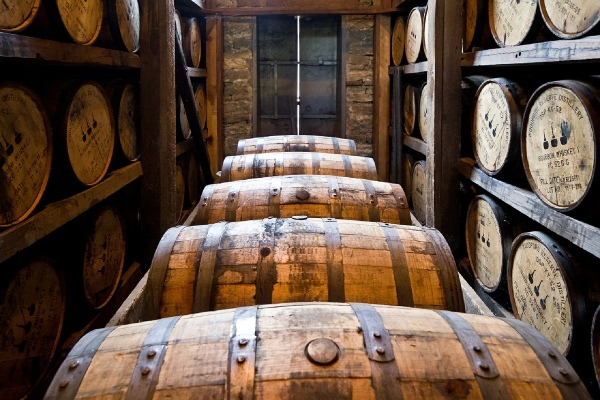
A solution to determine whether a whiskey is fake or not has been created in the form of an artificial 'tongue'.
Scientists from Germany's Heidelberg University developed the technology, which has the ability to pick out the brand, blend (single malt or blend), age, taste (rich or light) and country of origin of a whiskey, which can lead to determining the spirit's authenticity.
The tech is based on a sensor array of glowing dyes (the tongue) that produce a unique fluorescent signature for each sample based on reaction with the differing chemical components in just a mere drop of whiskey.
The results from one drop could indicate whether the spirit is a counterfeit, which would be useful for both the mass market and for premium brands, the scientists write in the journal Chem.
"For high-end whiskies, asking prices range from €10,000 to €135,000 per bottle. For this type of price, one might worry about counterfeits but that could also apply at the low end of the quality spectrum, where large amounts of cheap alcoholic beverages and low-quality counterfeits are sold as branded Scotch," the researchers write.
"Because it is difficult to obtain bona fide counterfeit whiskies, discriminating different whiskey brands and sub-brands is a closely related and perhaps even more challenging and important task. We demonstrate discrimination of any whiskey with ease by employing a hypothesis-free ad hoc tongue based on conjugated fluorescent polyelectrolytes or green fluorescent proteins (GFPs) fused to supercharged polypeptide chains."
The technology, which has been tested on 33 whiskies, involves a plastic tray with wells that are filled with a different fluorescent polymer that normally glow green or blue-green under a blacklight. Drops of whiskey are added to each well and the changes in fluorescence – either dimming or shinning more brightly – are analysed and the unique fluorescent signature pattern identified.
Six different dyes were used to establish a 99% accuracy rate and results were analysed within 15 minutes.
"If you have three, four, or five elements on the tongue, you get three, four or five different intensity changes, and these intensity changes form a pattern. And the pattern is unique. Each single polymer's response to the whisky would not be very useful, but if you combine them, they form a really unique pattern," Dr Bunz, an organic chemist at Heidelberg University leading the research, said in media reports.
Each sample was tested six times to ensure reproducibility.
Of the 33 whiskies tested – including Scotch malts, Irish whiskies and American bourbons – each produced a unique pattern, which would form the basis for future comparison of whiskey samples.
The scientists believe the artificial tongue has advantages over other testing methods such as mass spectrometry and gas chromatography.
"Our tongues do not need any sample preparation and are equal or superior to state-of-the-art mass spectrometric methods with respect to speed, resolution and efficiency of discrimination," the scientists wrote.
There are plans to finetune the test to increase its sensitivity and the researchers hope to commercialise the anti-counterfeiting technology.
The scientists also say the technology could be adapted for testing the authenticity of other products such as wine and medicines.
"Small, arbitrarily selected arrays display a fundamentally important and unexpected power of discrimination for very different analytes, which we will harness in the future to discriminate counterfeit consumer goods (eg perfumes and alcoholic beverages) and prescription drugs (outdated, adulterated, counterfeit, brand free etc). Such an extension has a direct significant impact on society and some impact on the economy," the scientists wrote.
The study was published in the journal *Chem *http://www.cell.com/chem/fulltext/S2451-9294(17)30174-2
©
SecuringIndustry.com





